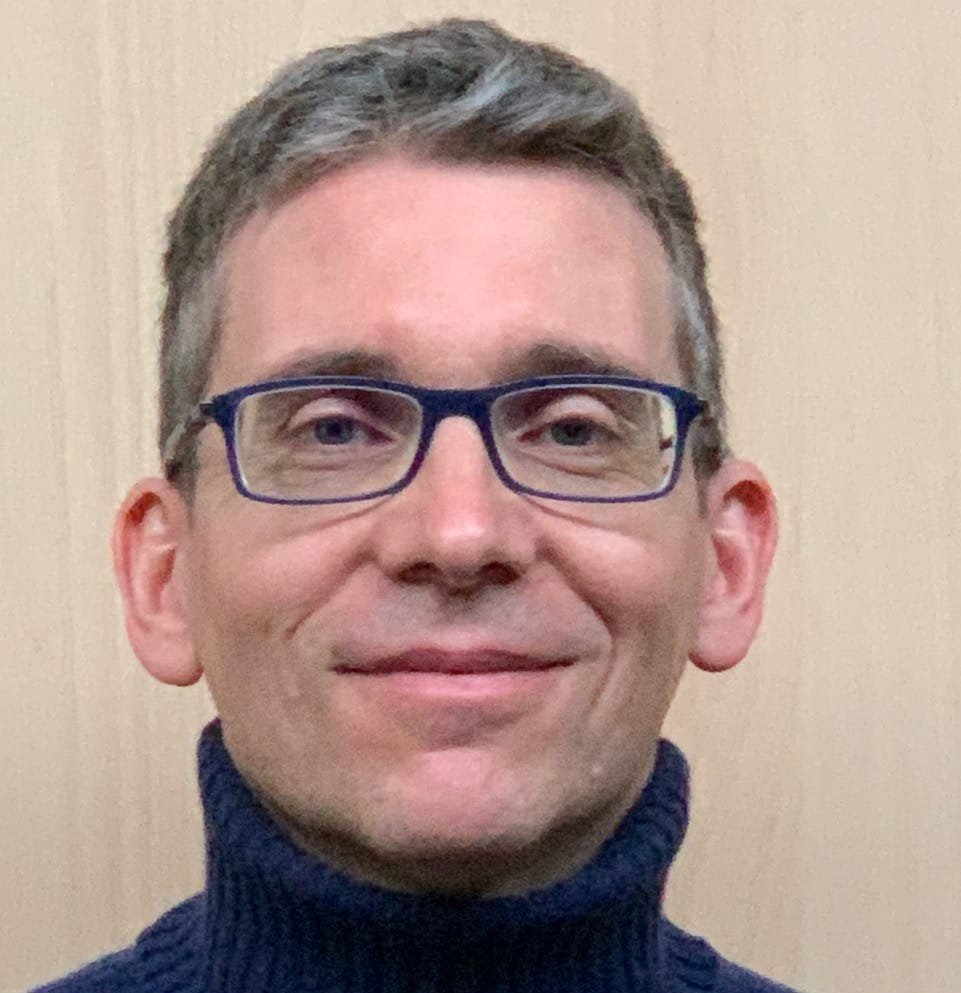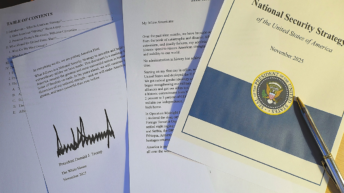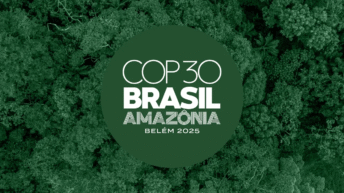
Following are the excerpts from an interview of Dr Paolo Scartezzini, Ph.D, Scientific Consultant for Map Italia (Maharishi Ayurveda Products Italy), Ethnopharmacology expert with Shri Sudarshan Ramabadran, Senior Research Fellow, India Foundation
Sudarshan Ramabadran (SR): Your Journey. What has inspired you to take to Ayurveda study it as science?
Dr Paolo Scartezzini (PS): My journey started about 30 years ago, when I learnt Maharishi Transcendental Meditation and decided to study Maharishi Ayurveda. I was fascinated by the powerful Ayurvedic strategy to strengthen health, even more than by the Ayurvedic possibility to heal diseases. I came to realize very early how huge the potential Ayurveda offers in terms of prevention is. In Ayurveda the concept of prevention goes much beyond what we identify as early detection, it implies predicting the disease long before the manifestation of its physical symptoms.
At the beginning of the 90s I was still a university student and started a collaboration with Map Italia, for which I have now been working as a freelance with great pleasure for 30 years.
The meeting with Vaidya J.R.Raju gave m4 the chance to deeply study the ancient science of Self pulse-diagnosis, the most efficient diagnostic methodology Ayurveda offers. We, as Map Italy, are currently teaching self-pulse diagnosis throughout Italy.
SR: Have you studied Ayurveda in India? Who are some of the authentic teachers in India for Ayurveda? Your experience.
PS: I studied mainly in India but also in Italy. When my interest in Ayurveda arose, there were no Ayurveda training in Italy, so I decided to go to India and had the great opportunity to study at the Maharishi Ayurveda Hospital in New Delhi and at the MAPL in Noida.
Being part of Map Italy, I have been working with Vaidya Jairam Ramanuja Raju for decades, with his wife Vaidya Devaki Raju and their daughter and sons Vd. Pavani Raju, Vd. Harsha Raju and Vd. Aditya Raju. I had the opportunity to study here in Italy with further visiting professors Vd. Mamatha Vishwanathaiah and Vd. Nagaraja Karthimali, who came to Italy to teach at our Italian Maharishi Ayurveda Academy (the Academy Map Italy created to offer trainings). In India I met many Vaidyas at the Maharishi Ayurveda Products Limited India in Noida, for example Vd. Triguna, Vd. Uniyal, Vd. Ved Prakash Arya, Vd. Srivastava and many others. I used to meet these doctors twice a year for many years and get training about ayurvedic plants and preparations. Moreover, in southern India I had the opportunity to meet Siddhas and experts in Varma, among them
Dr. K.P. Arjunan, Dr. N. Shunmugom, and I followed their training.
SR: Who are your spiritual gurus? Is there an Indian tradition that you practice or have taken to?
PS: Most of us practice Transcendental Meditation and are linked to the teachings of Maharishi Mahesh Yogi, but we don’t impose any kind of meditation in our Ayurveda training and don’t ask our students to adhere to any particular spiritual system.
SR: Is there a need for change in the paradigm of public health? Can you explain?
PS: Health is a birth right, but it should be nourished and maintained daily by everyone, not only by a government body. Our hospitals are never empty. Ayurveda describes three biological principles, called Doshas, that represents tendencies we should keep under control on a daily basis. Health should not only be diagnosed by doctors and prevention ought to be taught at school. If we were able to learn how to take care of our health from childhood, healthcare costs would be dramatically reduced and humanity would no longer be under the domination of pandemic as is happening now. Disease is always going to exist, but health is always going to exist too. This is the eternal battle which is allegorically described in all traditions.
SR: Your views on Ayurveda as Contemporary Health Science.
PS: Ayurvedic knowledge shows a lot of similarities with the very new information that is coming out thanks to the study of Centenarians. People who are older than 100 years and have been able to maintain health for such a long time are the most informative study models to understand how to slow down the aging process. Slowing down the aging process means decreasing the onset of aging related diseases too. Ayurveda has a specific branch of medicine dedicated to the possibility of dramatically slowing down the aging process. This branch of Ayurveda is called Rasayana. The current discipline called Geoscience and introduced just a few years ago describes the process we find in Ayurvedic texts. According to Geoscience all diseases are caused by 7 factors, which are the exact same factors that cause the aging process. This concept matches the principles of Ayurveda. Thanks to the most innovative medical research we are able to appreciate Ayurveda even more.
SR: Your views on Ayurveda as a Way of Life and Knowledge System.
PS: I have always been excited about the power of synthesis offered by Ayurveda. This power of synthesis is the Ayurvedic key to promote a healthy lifestyle and to spread deep knowledge. Ayurveda gives very clear basic essential rules to preserve health, but it also clarifies the necessity of a multidimensional knowledge to diagnose and treat disease.
For Ayurveda the three pillars of life are Ahara, food, Nidra, sleep, and Brahmacharya, the right use of the senses.
The importance of food is clear to every medical system, both in terms of choice and in terms of cooking procedures, but the importance of sleep is often neglected. This is a real pity, because good sleep supports bala and ojas, immunity system and power and strength, support sukham (happiness, joy), vṛṣatā (virility), Jñana (knowledge) and jīvita, the duration of life.
Lack of proper good quality sleep generatess the opposite effects, misery, ignorance, weakness, etc.
Every year in 70 countries there is a global clinical trial performed on 1,6 billion people; this global clinical trial is called “Daylight saving time”. In spring, when they steal one hour from us, we can see a subsequent 24% increase in heart attacks on the following day; instead, in autumn, when the stolen hour is returned to us, we can see a 21% reduction in heart attacks. I just want to remind you that immunoboosters don’t work if you sleep poorly and badly, irregularly and at inappropriate times. Sleep profoundly impacts our responses, for example our response to a standard flu vaccine and to other common vaccines like the hepatitis vaccin. Too little sleep produces less than 50% of the immune reaction. The shorter your sleep the shorter your life is likely to be.
Daylight saving is an economic decision that does not respect health. For some reasons, it really looks like humanity never learns from its mistakes, as the famous historian pert Carlo M. Cipolla sustained.
Together with its power of synthesis, Ayurveda states that the success of diagnoses and treatment comes from the knowledge of many disciplines. This point is so dear to me, and I would really like to emphasize that the different disciplines of human culture must speak with one another.
Among the 4 qualities of a good vaidya we find “tīrthāttaśāstrārtho”, which implies that the vaidya is not only a person of high intellectual and spiritual level, but also a person who knows all the Vedic Sciences.
A nice example of the need for collaboration between the different aspects of the human knowledge is the following: In 1970 the veterinary science described in details a specific cardiomyopathy which modifies the shape of the heart. The same discovery had been made 30 years later by cardiologists, who called it the Takotsubo syndrome. If Veterinary doctors and allopathic doctors had communicated, we would have spared 30 years of study. Knowledge can’t be solelysectorial and all disciplines must be given the same importance. This would eventually eradicate racism too.
SR: Your vision for the Future of Ayurveda let us say in decade from now, Ayurveda in 2030.
PS: The future of Ayurveda faces a big problem, which is the shrinking availability of high quality Ayurvedic plants. According to many scientific studies, cultivated plants show a lower healing potential than wild plants. As traditional Ayurvedic medications are mostly made with plants, their strength may now decrease, due to the use of cultivated plants.
Ayurveda will still exist and could right now bring about a decrease in public health costs, but big pharmaceutical industries and the ruling economic system are not going to promote real health and will perpetuate the current criminal waste of life and resources to feed unbridled consumeristic growth.
SR: Can you tell us when did you establish Maharishi Ayurveda in Italy? Where all is it spread out? How many students and doctors do you have?
PS: In the 1980s the Maharishi Movement spread the knowledge of Transcendental Meditation, Maharishi Ayurveda, Maharishi Sthapaya Veda and Maharishi Jyotish. Map Italia (Maharishi Ayurveda Products Italy) as a company was founded to promote the distribution of ayurvedic preparations and ayurvedic knowledge through Italy, both to doctors, pharmacists and to the public.
Thanks to our work, every Italian pharmacy can now stock Ayurvedic products, and every doctor can prescribe them. Italy is probably the only western country in which patients can find Ayurvedic products so easily in every area of the Italian territory.
Map Italia brought the Ayurvedic knowledge to thousands of allopathic doctors, pharmacists and naturopathic doctors though its training
Map Italia offers different forms of training:
- a 3 years program for medical doctors (i.e. only allopathic physicians can get access to it)
- a 2 years master program for medical doctors
- a 2 years master program for natural doctors/naturopaths and holistic professionals
- introductory trainings for natural doctors/naturopaths and holistic professionals
- Ayurvedic Massage Training
Among our training courses much importance is given to Self Pulse-Diagnose Trainings which we started on the basis of the knowledge of the J.R. Raju.
Map Italia spreads the knowledge of Ayurveda thanks to its Ayurvedic products through to the wide network of Ayurvedic sales representatives, who are trained by the company itself, and work throughout Italy.
My personal contribution has gone beyond the scientific consulting activities as an Ethnopharmacology expert and has reached various Italian Universities. I am currently teaching Ayurveda at the Rome University (“San Raffaele” in past also “La Sapienza”), University of Siena, University of Ferrara, University of Cagliari, University of Bologna (Alma Mater Studiorum, the most ancient University in the western world) and the University of Milan. In the last 30 years I have taught Ayurvedic Pharmacology to more than 2000 doctors and pharmacists.
SR: What is the acceptability of Ayurveda in Italy? Is there opposition and/or support? Are you seeing sincere interest in Ayurveda?
PS: There is an interest from medical doctors but being a natural medicine, it goes against the vested interests of the pharmaceutical industry.
SR: Ayurveda embodies the principles of sustainable and natural living. Your views.
PS: Ayurveda respects the principle of the creation of a fertile ground for future generations.
Each creature expresses its creativity without producing unrecyclable garbage.
Each creature (insects, animals, plants ecc…), has developed its own form of medicine in harmony with this principle.
Both, Diagnosis and Therapy should not produce garbage; in a healthy ecosystem, the only waste products have to be nourishment for other creatures.
Plants produce oxygen as a waste product; but this waste products become essential nourishment for our lives. Āyurveda has this characteristic.
If a medical system doesn’t have this characteristic, it will produce disease, that’s the reason why, in our society, we need an ever increasing number of hospitals and why these hospitals are always full of patients!
This is the reason why according to the Caraka Samhita the first disease factor is the city, village (grāmya) and the foods of the city (grāmyahara), which are described as being completely different from those of the forest (Araṇya), where we can find biodiversity. The human body is a meta-organism, a melting pot of biodiversity and needs biodiversity around and inside, because biodiversity is essential for life!
Pulse diagnosis is an example of a perfectly sustainable diagnose methodology. It is extremely powerful. The further diagnostic ayurvedic modalities like tongue, eyes, voice and body analysis, are of great importance, but it is only through pulse diagnosis that you can identify the vibrations of the imbalance before the disease manifests in the physical body, and thus act much before serious problems arise.
The potential of self-pulse diagnosis as a way of self-healing and self-transformation is considerable, with no need to spend money in any preparations.
We promote healing in the highest sense, transformation of our own consciousness. We offer training not only to doctors, but also to patients because we believe in the process of inner transformation that allows healing and the awakening of higher wisdom in every patient.
SR: What is the reaction of other forms of alternative medicine, such as homeopathy, active in Italy?
PS: Not every doctor is open to Ayurveda, but we must recognize that the problem lies in their medical training. Allopathic doctors are not taught to cooperate with other healing disciplines, in spite of the fact that medical protocols have many limits and risk fostering an ego centered approach to treatment more than an integrative approach.
Luckily, there is a now a large number of doctors who realise allopathic medicine needs to develop other tools to meet the needs of the patients.
Homeopaths are generally more open to Ayurveda. We have a lot of homeopathic doctors among our students.
SR: What is the legal/official government policy toward Ayurveda in Italy?
PS: Ayurveda is seen as a form of Alternative Medicine and ayurvedic preparations reach the market as food supplements.
SR: Are the patients who come to you mostly Italians or are they Indians living in Italy?
PS: Mostly Italians
SR: Any interaction that you have had with the Catholic church on Ayurveda?
PS: We didn’t have any specific interaction but we know that many patients who use Ayurvedic products and practice Transcendental Meditation are also linked to the Catholic Church.
SR: Are there life-style peculiarities among Italians that you have had to adapt to in your Ayurvedic practice too?
PS: The traditional Italian lifestyle is generally compatible with the Ayurvedic lifestyle. Food has remained a ritual here, and some principles of Italian nutrition (that lead to a long life span ) are similar to Ayurvedic principles. Italians used to always eat fresh food, and spend a long, serene time for lunch and dinner, which is exactly what Ayurveda recommends. We all know that globalization has imposed fast food and caused a serious increase in digestive issues, typical of the American lifestyle.
SR: How has the organization dealt with the covid crisis in Italy?
PS: We simply went on doing what we were doing before, just implementing more online training. Promoting health is the wisest solution, not only in terms of results but also in terms of expenses. Up to now 1.200.000 people died of Covid worldwide, but 7.000.000 die every year because of air pollution. We need to focus on promoting holistic health.






Add comment